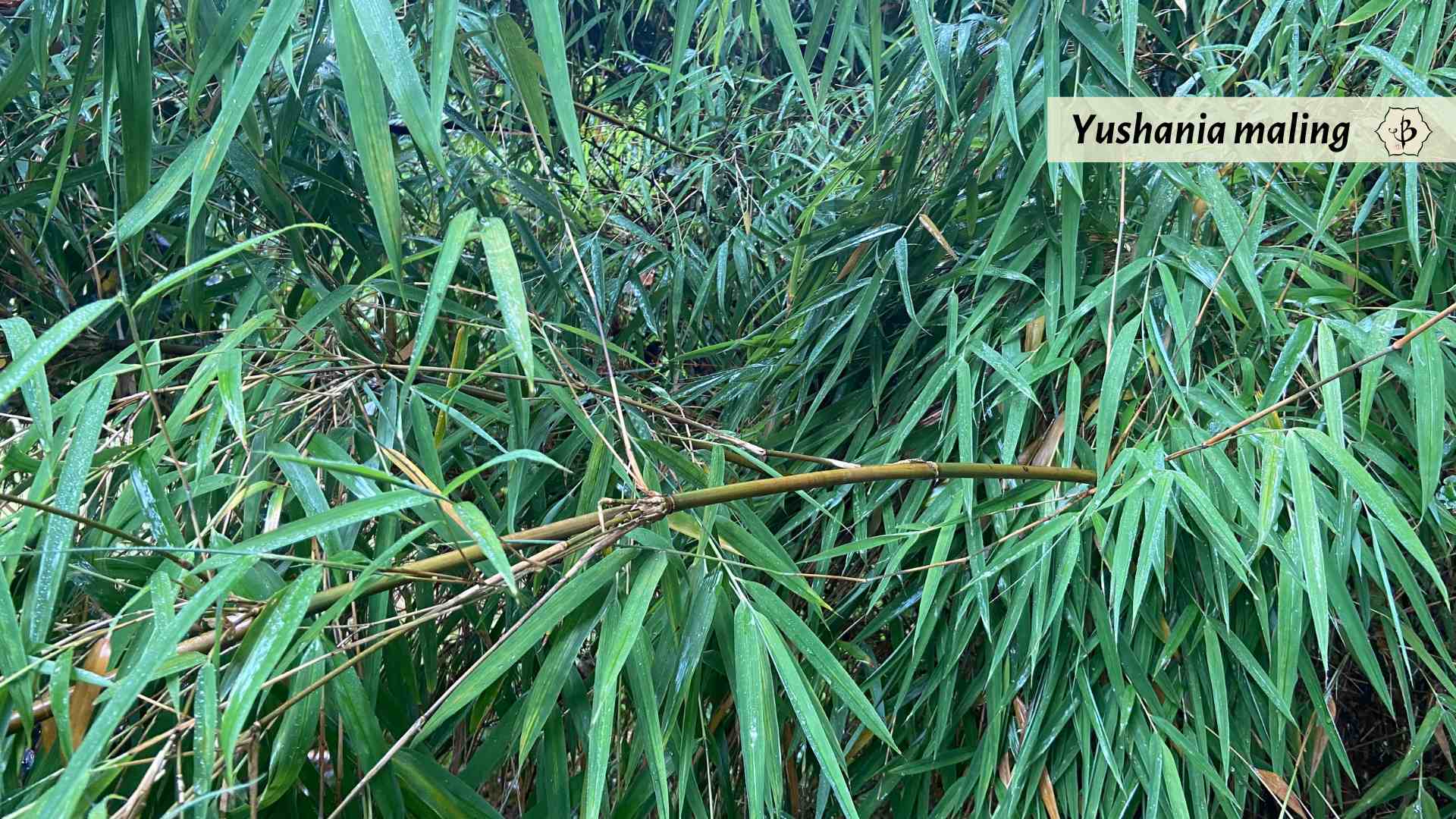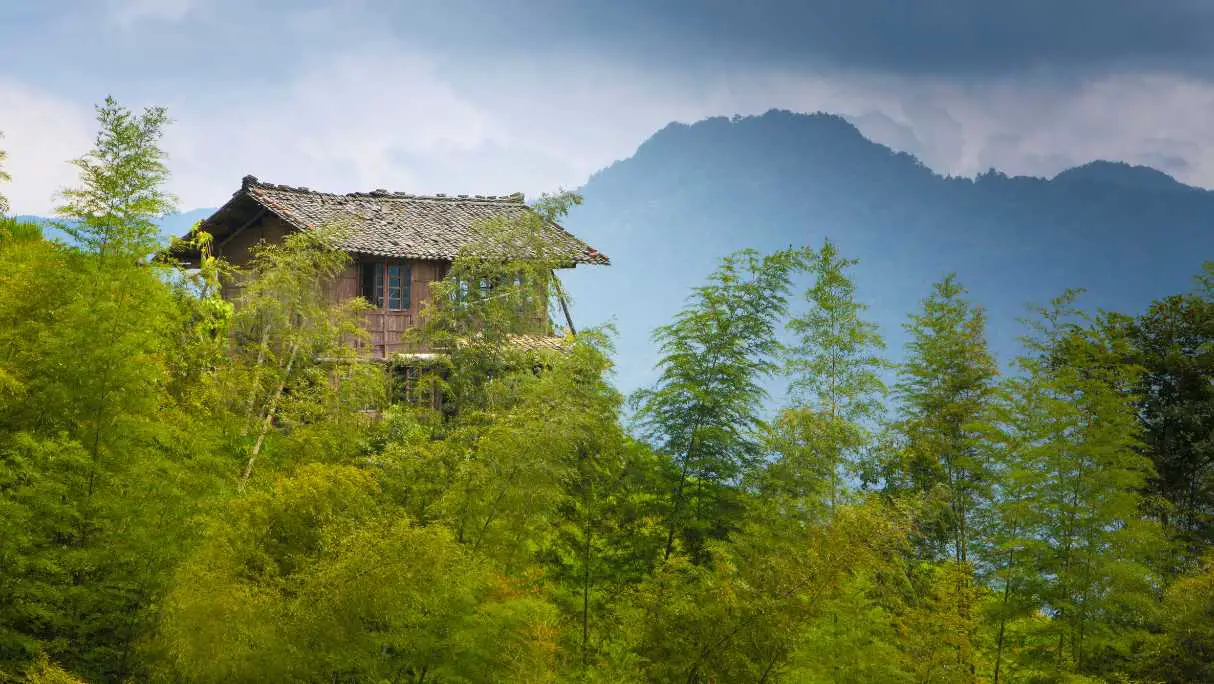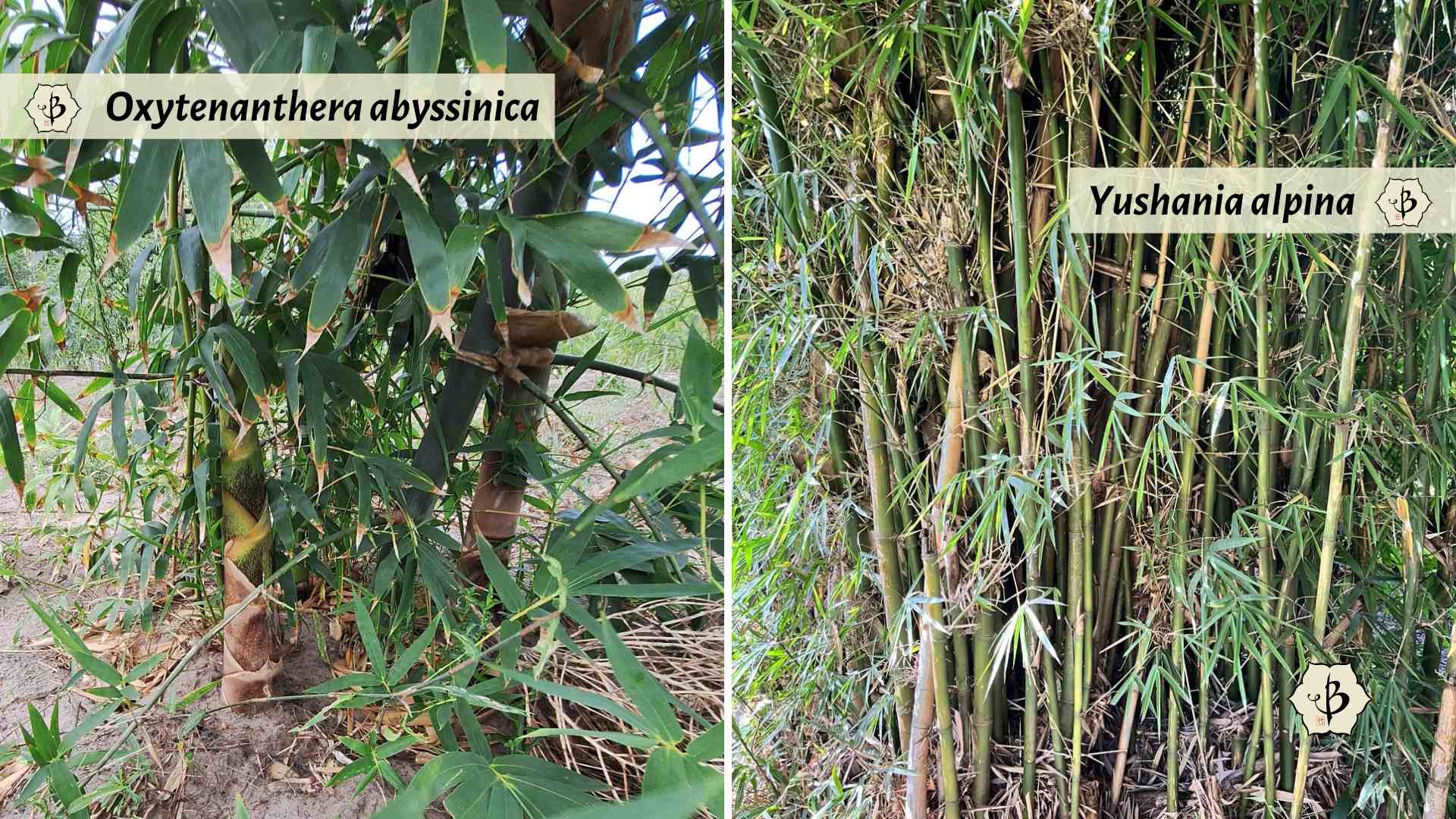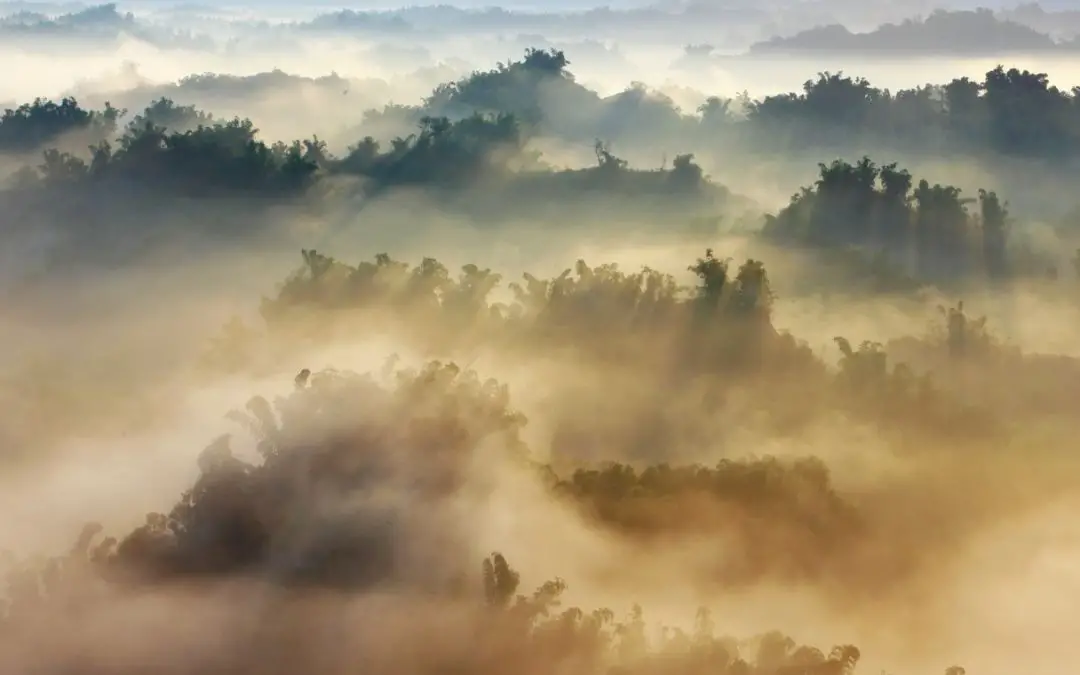If you’re looking for clean air and easy access to winter sports, the mountains are a great place to be. But what about your bamboo plants? Will they be too cold up there? Or is it OK to grow bamboo in the mountains?
Many bamboo varieties grow perfectly well in the mountains, at high altitudes, and in other cooler climates. The genera Fargesia and Himalayacalamus, native to the lower elevations of the Himalayas, include many species of cold-hardy, clumping bamboo. Some of these varieties are commonly known as Mountain Bamboo. Fargesia macclureana has been reported at elevations as high as 3,800 meters, or 12,500 feet above sea level.
NOTE: This article first appeared in May 2021, most recently updated in September 2024.
Bamboo growing conditions
The stereotypical scene of a bamboo forest probably looks something like a tropical jungle in Bali or Thailand. But there are more than 1,400 species of bamboo, with an enormous natural distribution across five continents and innumerable habitats. Of course, bamboo flourishes in tropical and subtropical regions throughout the world. But there’s also plenty of bamboo growing in more temperate zones and higher in the mountains.
From the highlands of Colombia to the foothills of the Himalayas to the slopes of Kilimanjaro, bamboo actually thrives in all kinds of mountain settings. In fact, if you look around the globe, you might even deduce that bamboo prefers the mountains. Whether you’re looking at the Giant Panda habitat in central China or the massive Guadua groves of South America, bamboo certainly knows how to make itself at home in the higher elevations.
But when people ask about growing bamboo in the mountains, what they’re usually looking for are bamboo varieties that can tolerate the snow and frost. The equatorial mountains of Colombia are no place to go looking for cold-hardy bamboo. Neither are the mountains of Kenya and Ethiopia. But from China and the Himalayas, you can source a great bounty of cold-hardy and elevation-friendly bamboo species.

Best bamboo species for the mountains
Genus Himalayacalamus
Somewhere in the shadows of the highest mountain peaks on the planet, the valleys and foothills of Nepal and Northern India are teeming with bamboo. These mountain bamboo varieties grow at elevations of a couple thousand feet, all the way up to 6-7,000 feet or more above sea level. (According to the Bhutan Ministry of Agriculture, Himalayacalamus falconeri can grow as high as 2,400 meters, or 7,800 feet.)
As a general rule, clumping bamboos are considered tropical (or subtropical), and running bamboos are classified as temperate (of the Arundinarieae tribe). But the genus Himalayacalamus is one of the exceptions to this rule.
These medium-sized bamboos, which grow in the lower Himalayas, including Nepal, Bhutan, North India and Southern China, are definitely clumpers. They have pachymorph or sympodial rhizome roots that result in a compact growth habit. Most gardeners deem this a favorable characteristic because it makes for a manageable, non-invasive specimen. More cold hardy than most clumping bamboos, these varieties can tolerate winter temperatures down to about 10º F.
There are only about 10 species of Himalayacalamus, including a handful of pretty popular ornamentals. The most common species are H. asper, H. falconeri (‘Candy Stripe’), H. hookerianus (Himalayan Blue Bamboo) and H. porcatus (Nepalese Blue Bamboo). The unusual coloration of their culms results in an especially attractive garden feature.
Himalayacalamus is very closely related to the genus Drepanostachyum, which has more equally sized branches. Himalayacalamus usually have fewer branches, with one at each nodal joint that’s clearly dominant.
Genus Fargesia
In the mountains of Central China, prime stomping grounds of the Giant Panda, and well into the Himalayas, grow the hardiest of all bamboo varieties. Himalayacalamus may be something of an oddity, but Fargesia completely ignores the rule that equates clumping bamboo with tropical bamboo.
There are about 60-70 species in this genus, and they are probably the most cold-hardy bamboos of them all. They can survive winters as cold as 20º below zero F. They are also clumpers. And there are a handful of ornamental species that are particularly popular, especially in Europe and the cooler parts of North America. F. murielae, F. nitida and F. rufa are the most common. Their compact footprint and gently arching culms produce a very graceful aspect.

If you want to grow bamboo in the mountains, Fargesia is the genus to look for. Bamboo researchers in China report finding Fargesia macclureana at elevations as high as 3,800 meters, or 12,500 feet above sea level, on the Qinghai-Tibet Plateau. But you are unlikely to come across this extraordinary species at any nursery. It’s still a rarity.
The Giant Pandas roam the mountains of the Sichuan Province in central China. Here, at altitudes of 1-2,000 meters (3,500 to 7,000 feet) above sea level, they are able to find a healthy variety of Fargesias. Pandas eat other varieties as well, and the assorted bamboo makes up about 99 percent of this animal’s specialized diet.

Genus Borinda and other Himalayan outliers
Fargesia is very closely related to Yushania and Borinda, two other genera of cold-hardy clumpers native to Southern China and the Himalayan foothills. And sometimes even the experts have a hard time deciding whether a certain species belongs to one genus or another.
The handful of species now classified in the genus Borinda are particularly ornamental as well as cold-hardy. Their distribution is limited to Yunnan, Tibet, and Bhutan. Some of them once belonged to the genus Arundinaria, which now includes just three species of bamboo native to the southern U.S.
Genus Phyllostachys
Perhaps the most widespread genus of all bamboo, Phyllostachys are survivors. They have the kind of running roots that strike fear in the hearts of amateur gardeners. And they can usually tolerate winter temperatures of minus 5 or 10º F.
If you have the space and you want a fast grower, Phyllostachys is probably the way to go. Otherwise, be sure to plant some kind of rhizome barrier to prevent the roots from taking over the whole garden. Once they gain a foothold, they can be a beast to remove. (Check out our listing of essential bamboo garden supplies.)
There are about 50 distinct species of Phyllostachys, in addition to countless cultivars. They include some of the largest temperate timber bamboos, like P. vivax and P. bambusoides, which are lovely as ornamentals. P. edulis, or Moso Bamboo, is probably the world’s most economically important species, widely grown in its native China for flooring, furniture and textiles.

This genus also includes dozens of small and medium-sized bamboo species. Golden Bamboo, or P. aurea is extremely common and resilient, as is P. bissetii. These make very effective privacy screens, quick to establish themselves, and with thick foliage. P. aureosulcata is easy to recognize with its yellow and green stripes. And keep an eye out for the subspecies ‘Spectabilis’, which is particularly spectacular.
Genus Guadua
In the western hemisphere, Guadua angustifolia is something like the queen of bamboo. It’s a giant, open-clumping, tropical bamboo that normally grows at altitudes of 2,000 to 5,000 feet (1-2,000 m) above sea level, in the highlands of Colombia, Venezuela, Ecuador, and northern Peru.
In South America, this bamboo is widely used, with great cultural and economic importance. The culms commonly reach 100 feet in height, with thick walls that make them ideal for construction. Outside of this equatorial habit, however, this bamboo does not grow so well. Even in the subtropical climes of Florida, you are unlikely to come across an ornamental specimen of Guadua.
Bamboo in the Andes: Chusquea and Rhipidocladum
Perhaps not as well-known as Guadua, the genus Chusquea probably has the widest natural distribution of any bamboo. The 150 or so species of this neotropical genus naturally occur from 47°S in southern Chile all the way to 24°N in Sonora, Mexico, and from sea level up to 10 or 12,000 feet in altitude. Native to the mountains of Chile and Argentina, Chusquea andina is one the hardiest and most cold-tolerant bamboos of South America. Closer to the equator, C. tesselata is more likely to achieve those record-setting elevations.
Several species of Chusquea are popular as ornamentals. They can tolerate a wide range of temperatures, from around 0º F to 100º F, and mostly grow 10-30 feet in height. These Latin American beauties often have very attractive culms, golden-yellow in color with dark green rings around the node joints. And interestingly, they are solid rather than hollow inside.
The genus Rhipidocladum is especially unusual, with just 15 or 20 species distributed from Mexico to South America. These bamboo varieties are distinguishable for their long leaves and fan-like branching. In fact, rhipid is Greek for fan-like, and clad means branch. They typically grow in the montane forests of Chiapas and Central America, through Colombia and in the lower elevations of the Andes, up to about 8 or 9,000 feet.

African Alpine Bamboo
Africa is home to more bamboo than most people realize. Yushania alpina, or African Alpine Bamboo, grows in the highlands of the East Africa Rift, at around 8-10,000 feet in altitude. Its habitat covers portions Ethiopia, Kenya, Uganda, Malawi and Congo. It’s also an important source of food for the endangered mountain gorilla and golden monkey.
Further south, in more temperate climates, Thamnocalamus tessellatus grows throughout the mountains of southern Africa. Locals call it Bergbamboes, which translates to Mountain Bamboo. The local mountain range, Bamboesberg, takes its name from this common species.
You have to go to Africa to enjoy these exotic bamboo species. You’re very unlikely to find them in a North American or European nursery.

Further reading
If you’re interested in growing bamboo in the mountains, you might also check out these other popular articles.

























